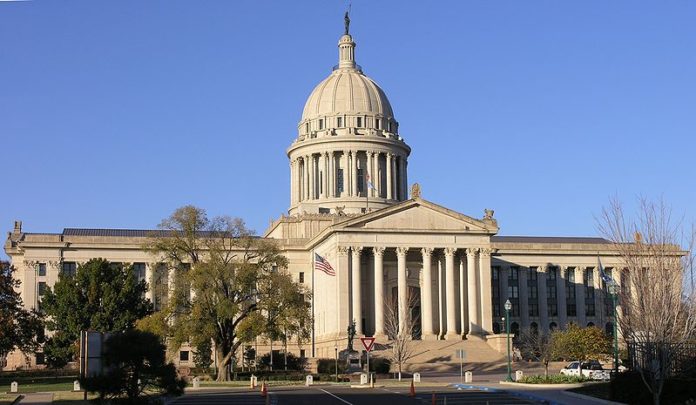BY DAVID PERRYMAN
 The science of meteorology has improved to the point that weather forecasters are able to assign a risk level to severe storm days sometimes four or five days in advance. The predictability of weather conditions is based on decades of study of the cause and effect of high pressure, low pressure, the jet stream, El Niño’s, dry lines and unstable air.
The science of meteorology has improved to the point that weather forecasters are able to assign a risk level to severe storm days sometimes four or five days in advance. The predictability of weather conditions is based on decades of study of the cause and effect of high pressure, low pressure, the jet stream, El Niño’s, dry lines and unstable air.
Budget makers and finance directors in Oklahoma government are not so accurate. Consequently, state government is crippled and is unable to function in a productive manner.
The ever-present question is, “What can be done?” Unfortunately, the lack of accuracy in fiscal prognostication is not entirely due to a lack of effort.
While it is true that dogmatic adherence to politically inspired economic strategy often skews projections, the Wild Card in Oklahoma’s budgetary quagmire is the ever present “tax credit.”
According to a June 2016 Oklahoma Watch article, at the end of 2014, businesses and individuals held over $417 million in unused income tax credits that could be carried forward to future years and state officials are unable to predict when the credits might be used or what effect they might have on future budget years. That unpredictability as well as the sheer size of the state’s tax credit “liability” cripples Oklahoma’s ability to properly fund education and infrastructure and to fairly compensate state employees who have not had a raise in over eight years.
So, what is the answer to the question, “What can be done?”
First, we have to stop cutting revenue. The notion that trickle-down economics was a viable theory has been abandoned by all except the most partisan politicians and crony economists. State income tax cuts and corporate tax cuts have proven devastating to the state’s budget.
Second, we have to address the tax credits and stop shipping money out the back door of state government. Those of us who recognized the potential harm of non-performing tax credits responded with HB 2182 which became law on Nov. 1, 2015. HB 2182 created the Incentive Evaluation Commission so that every state-sponsored financial incentive [tax credit, tax exemption, tax deduction, tax expenditure, rebate, grant, or loan that is intended to encourage businesses to locate, expand, invest, or remain in Oklahoma, or to hire or retain employees in Oklahoma] will be reviewed at least every fourth year.
As a co-author of HB 2182, I intend to continue to monitor the evaluations and will continue to keep taxpayers informed of the commission’s efforts.
Currently, 11 of the state’s incentives are being reviewed. They include the five-year ad valorem exemption for certain businesses; the credit for zero emission facilities; the credit for small wind turbines; the film enhancement rebate; the historic structure rehab credit; the aerospace engineer credit; the aerospace engineer tuition reimbursement credit; the industrial access road program; the excise tax exemption on aircraft sales; the quality events program; and the venture capital investment program. These 11 incentives have a price tag of more than $111 million.
Assessment of the value and effectiveness of these tax incentives is a step in the right direction. Now, let’s see if legislators have the intestinal fortitude to eliminate those that are not productive.
– David Perryman, a Chickasha Democrat, represents District 56 in the Oklahoma House







